BASIN, W.Va. — Nestled deep within the wooded hollows of West Virginia, where trout streams meander through rhododendron and ridgelines roll like waves into the southern sky, a 33-acre parcel of land quietly epitomizes the region's past.
Here, on a gentle rise overlooking the clear waters of Barker’s Creek in Wyoming County, the McKinney homeplace is perhaps more than just a home. It's a refuge, a retreat, and a window into the region’s Appalachian heritage.

“It’s one of the most beautiful pieces of mountain property I’ve come across this year,” says David Sibray, a historian, publisher, and real estate agent specializing in West Virginia’s rural and historical properties.
“There’s a serenity to this place. You hear the stream below, the wind in the trees, and at night, absolutely nothing but the sound of the water tumbling over the rocks.”
Sibray, who also publishes West Virginia Explorer Magazine, has made a career of tracking down West Virginia’s forgotten and overlooked properties—places with roots, character, and stories. The McKinney Homeplace, he says, checks every box.
A Homeplace with History
Built in the 1940s, the 1,116-square-foot residence appears modest by modern standards—a one-story, three-bedroom, one-bath residence with a full basement. But its charm is undeniable. With two bedrooms and a living room oriented toward the stream, and an enclosed front porch that catches the morning light, it invites long evenings of reading, sleeping, or simply listening to Barker’s Creek slip past the stone cobbles.
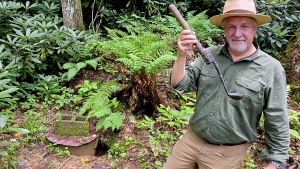
“This was a working homestead,” said Randy Burdette, a broker with Foxfire Real Estate who collaborates often with Sibray. “The McKinneys would have raised their own food, hunted the forest, and fished the creek. It’s hard to imagine a more idyllic setting for Appalachian self-sufficiency.”
Surrounded by towering hardwoods and conifers, the house is a piece of living history—solid, serviceable, and enduring. The homestead is fed by a bold mountain spring that continues to provide water, although municipal service is now also available along the roadside. Much of the acreage lies above the creek’s floodplain, offering security alongside scenic views.
“The water alone is a treasure,” Burdette says. “In a world where clean, abundant spring water is becoming more rare and valuable, having your own source on-site is a real asset.”
A Forest Like No Other
About 90 percent of the property is mature woodland—what botanists would classify as a Southern Appalachian Cove Forest. In these rich hollows, shaded by massive oaks, hickories, and tulip poplars, the forest is vibrant, diverse, and very much alive. Laurel and hemlock dominate the lower slopes, while groves of rhododendron glow pink in the spring.
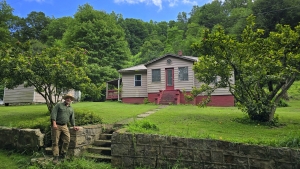
“People talk about biodiversity, but until you’ve walked through a cove forest like this, you can’t really understand it,” Sibray says. “You’re walking through a tapestry that’s been woven over thousands of years. Every footstep reveals something new—a fern, a mushroom, a tiny salamander.”
While a formal timber assessment hasn’t been performed, the property clearly holds value as a natural asset. But more than its timber, it’s the forest’s undisturbed character that makes it stand out. For those seeking an escape from urban life or the next location for a conservation-minded retreat, this property offers seemingly limitless potential.
Wonderful Neighbors and Mountain Quiet
Though remote, the property is anything but isolated. Wildlife abounds here, from black bear to white-tailed deer, from turkeys to bobcats. Grouse drum in the thickets, and owls call from the hemlocks at dusk. Songbirds brighten the morning with their chorus, while eagles occasionally soar above the creek in search of trout.
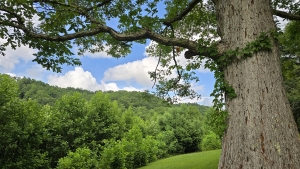
“It’s a hunter’s paradise,” Sibray notes. “But it’s also a birdwatcher’s dream. It’s just as common to spot a kingfisher or a heron as it is a deer.”
Hunting is permitted on the surrounding thousands of acres of public and private forestland, though many new owners have come to the area in recent years to do the opposite—to observe, not to harvest.
A Trail to the Past—and to Adventure
Long before homesteaders arrived in the 1800s, a well-worn network of Native American trails crisscrossed the mountain region. For millennia, the high ridgelines and creek valleys provided paths for indigenous peoples as they traveled through. One such trail, which follows Barker’s Ridge, was used by the Shawnee of Ohio during the 1700s to raid settlements in the New River Valley.
“Few people realize how ancient this landscape is in terms of human history,” says Sibray. “The ridges and streams were like interstates for prehistoric peoples.”
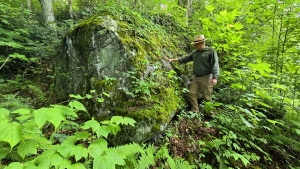
In the 1900s, the discovery of coal transformed the region, bringing with it a boom of railroads, company towns, and industrial might. The Virginian Railway’s construction in 1909 opened up the area to mining and fueled decades of economic growth, though much of that has since waned.
Today, many former mining towns have faded into ghost towns, haunting and beautiful in their decay, and attracting a new kind of visitor—the heritage tourist.
A Hub for Outdoor Recreation
While coal defined the region’s past, outdoor recreation may well define its future. The McKinney property is in the heart of southern West Virginia’s emerging adventure corridor. Within a short drive are premier destinations for hiking, mountain biking, trout fishing, off-roading, and even skiing.
The Hatfield-McCoy Trail System, one of the most extensive off-road vehicle trail networks in the eastern U.S., extends to within five miles of the property. With more than 1,500 miles of designated routes, the system draws tens of thousands of ATV riders annually.
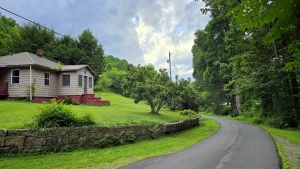
“Every time I list a property near the Hatfield-McCoy trails, I get calls from entrepreneurs looking to open cabins, lodges, and outfitters,” Sibray says. “There’s just not enough lodging to meet demand.”
Other nearby tourist attractions include:
Guyandotte River Water Trail: A developing 166-mile paddling route perfect for day trips and accessible within ten minutes.
Twin Falls Resort State Park: A state-run vacation park with a lodge, campground, golf course, and more than 50 miles of hiking and biking trails.
R.D. Bailey Lake: A tranquil 630-acre reservoir with full-service camping, fishing, and boating—less than an hour away.
New River Gorge National Park and Preserve: One of America’s newest national parks, celebrated for rock climbing, whitewater rafting, and vast hiking trails, is only 50 minutes from the property.
Winterplace Ski Resort: One of West Virginia’s most popular ski resorts, also 50 minutes away, caters to tens of thousands each winter.
A central, yet secluded location
Though it may feel a world apart, the farm is easily accessible via several major roadways. Mills Grocery Road and Peaks Ridge Road, both state-maintained, lead from either end of the property to US-460 and I-77, major routes for regional commerce and tourism.
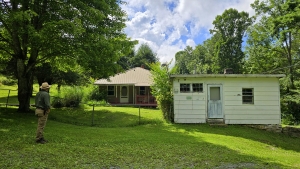
The town of Mullens is only 25 minutes away, while Beckley, with shopping, healthcare, and higher education, is a 35-minute drive. Princeton and Bluefield, located to the south, offer additional amenities within a 45-minute to one-hour drive.
“For people looking for a second home, a retirement property, or even a small-scale eco-resort project, this location has potential,” Sibray says. “It’s private, but it’s not isolated.”
Appalachian farm for sale—a way of life
What makes the McKinney farm so compelling is not just the land or the house, but the lifestyle it represents. It offers a slower pace, cleaner air, and a deeper connection to the natural rhythms.
“I think people are waking up to the fact that peace and quiet aren’t luxuries—they’re necessities,” says Sibray. “And here, you have peace in abundance.”
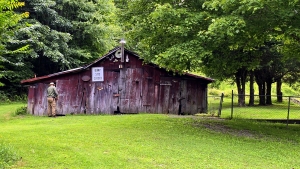
Sibray is quick to note that while the property could support development, multiple homesites are available—the real magic might lie in preserving it just as it is.
“It would make a beautiful family compound, or a writer’s retreat, or even a nature lodge,” he says. “However, part of me hopes someone will just love it, live in it, and let the forest keep doing what it’s done for centuries.”
A Rare Appalachian Opportunity
As West Virginia continues to reinvent itself as a destination for recreation and rejuvenation, properties like the McKinney farm are becoming increasingly scarce. The blend of natural beauty, history, and development potential makes this 33-acre woodland more than just a real estate listing: it’s a rare chance to claim a piece of the Appalachian dream.
“You can’t create places like this,” says Sibray. “They just have to be discovered.”
About the McKinney Family
Members of the McKinney family were among the early settlers of what is now Wyoming County, West Virginia, arriving in the late 18th or early 19th century, when the area was still part of western Virginia.
Like many pioneer families, they came seeking fertile land and opportunities in the rugged Appalachian frontier. They established homesteads along the Guyandotte River and its tributaries, contributing to the development of small farming communities in the region. Many branches of the family settled in the highlands above the river on Barkers Ridge.
Over time, the McKinney name became well established in southern West Virginia, with descendants involved in local farming, coal mining, education, and civic affairs. The family's long presence in the area is reflected in regional records, cemeteries, and oral histories, marking them as one of the foundational families in the early history of Wyoming County.
FOR MORE INFORMATION: For more information, interior shots, or to schedule a visit to the McKinney Homeplace, contact David Sibray at 304-575-7390 or visit the full listing for the property at https://foxfirenation.com/listings/barkers-creek-homeplace/.
West Virginia farm for sale on Barkers Creek
Sign up to receive a FREE copy of West Virginia Explorer Magazine in your email weekly. Sign me up!
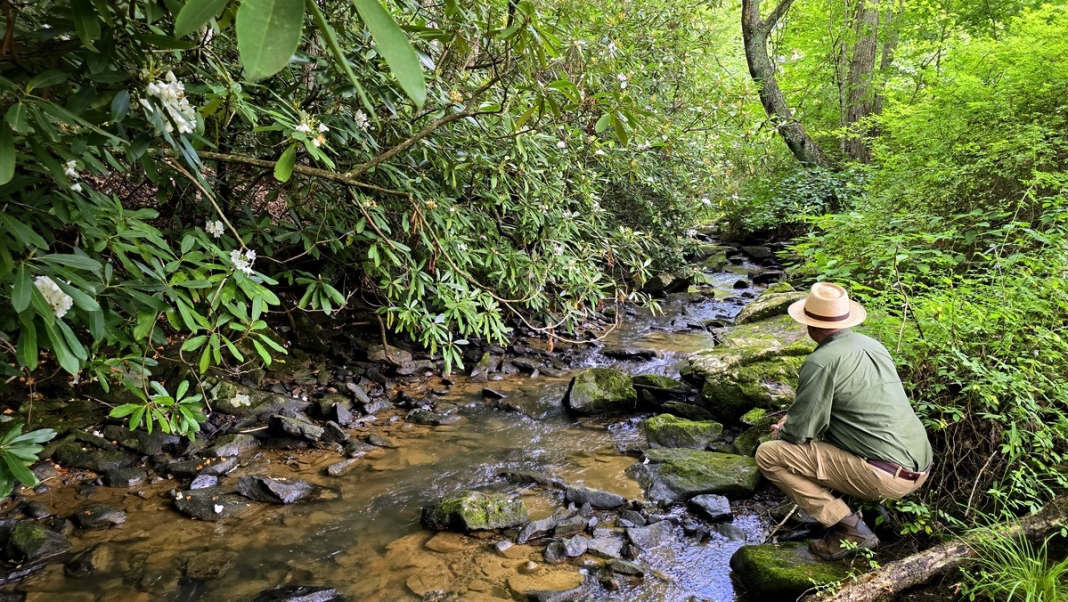
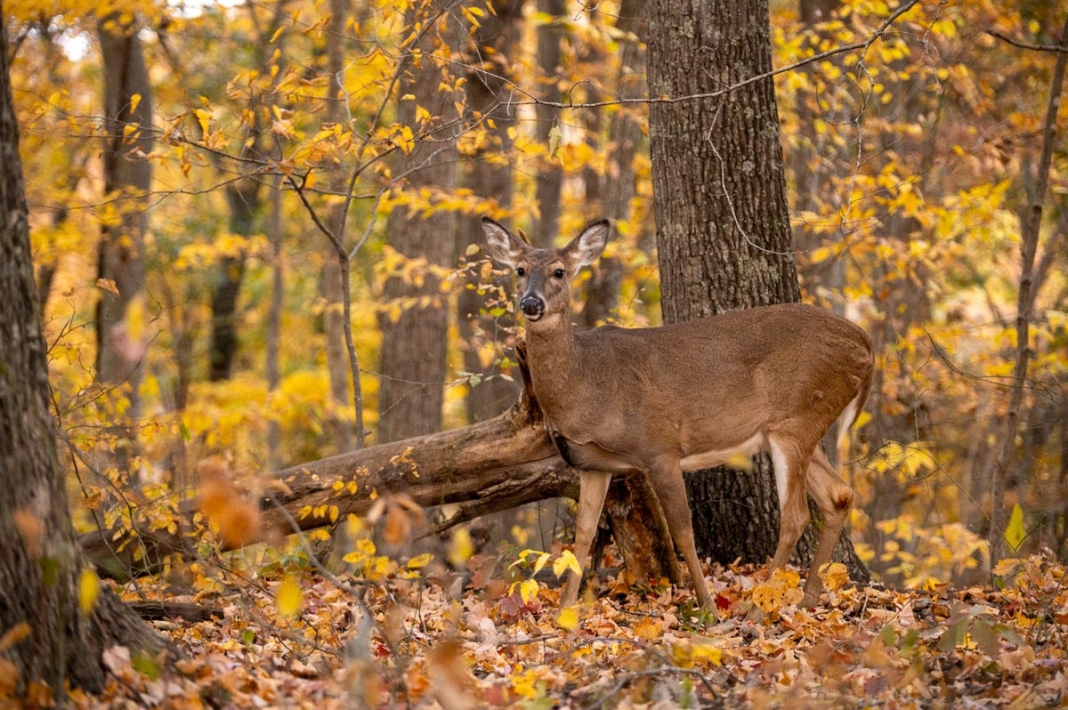

Whats the sale price. It's a beautiful place.
Ann, it's $230,000. The full information is in the link near the end of the article.
I'm surprised you hear nothing but running water at night. I'd think a habitat like that would be busy.
Foraging raccoons squabbling over a snack, whip-poor-wills and great horned owls calling, foxes vocalising to their kits, deer huffing...the scent of resin and fecund green undergrowth, the sight of thousands of stars permitted to shine without electric light pollution.
You can actually hear all that as well as owls hooting in the surrounding hills.